Spotlight: Patrick Barrington
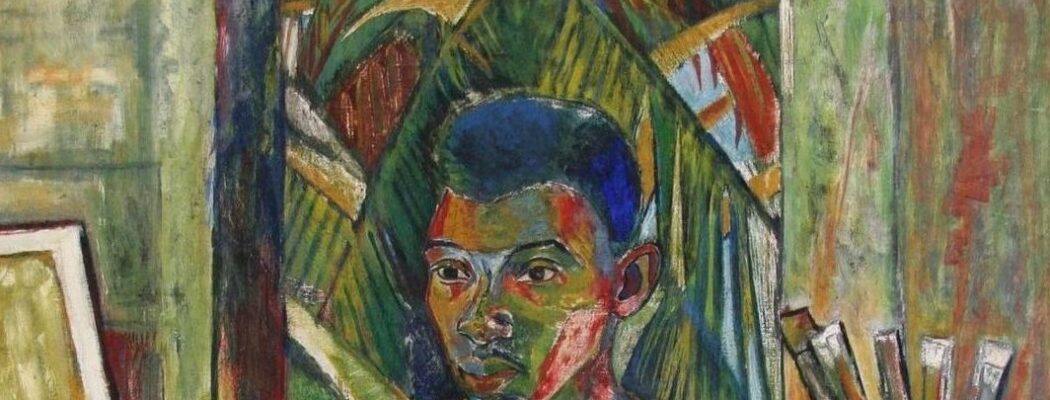
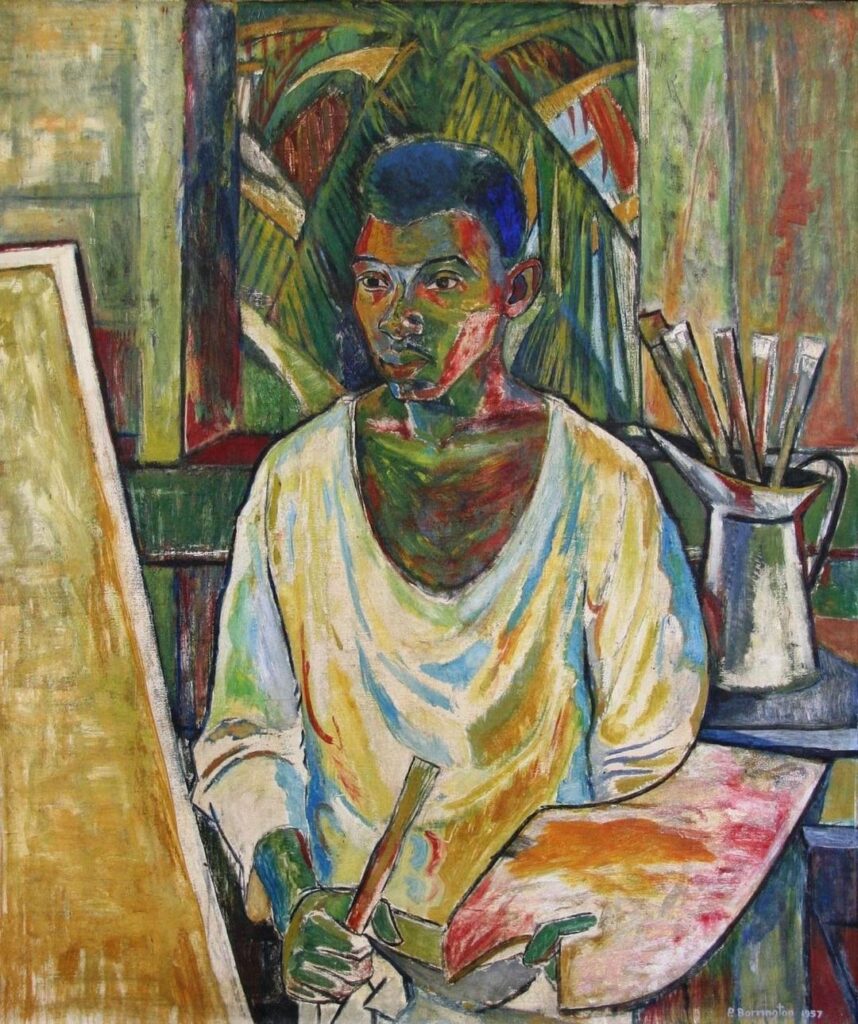
As part of Wandsworth Art’s Black History Month programme, which celebrates and honours work by local Black artists, writers and community leaders, we take a moment to admire the paintings of Patrick Barrington, a Guyana-born Battersea resident, whose life was as colourful as his paintings.
In this arresting, Cubist-inspired self-portrait, painted in 1957, light seems to radiate from the palette that rests in the painter’s left hand. From a smear of golden sunset orange emanates a glow that illuminates the artist’s smock, made for him by his mother, his serene face, the canvas, the scene.
We see the artist’s world – his studio, the dense lusciousness of the banana trees outside – and the tools and brushes with which he creates it. There is no sign of a struggle. While the work clearly shows Picasso’s obvious influence on the artist, it also loudly proclaims his confident, quiet self-possession.
The young man is Patrick Barrington, a Guyanese artist who settled in Battersea and died here aged 88 this summer. He was part of the Guyanese artistic diaspora who settled in Britain from the 1950s to 70s, who include Frank Bowling, Aubrey Williams, Stanley Greaves, Denis Williams and Donald Locke among others. While he has long been celebrated as a great artist in his homeland – his self portrait, which hangs in Guyana’s National Gallery, is considered by the country’s art critics to be one of the best portraits in the history of Guyanese art – his artistic practice has regrettably been overlooked in the UK.
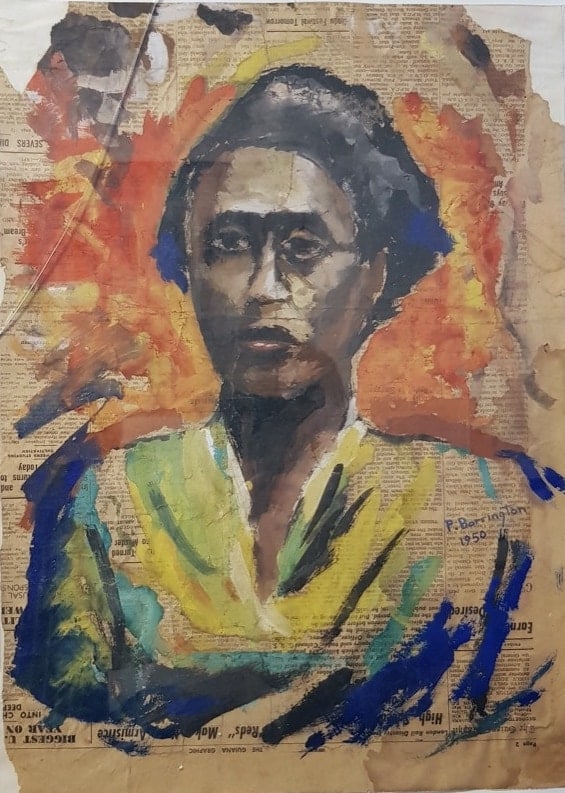
Barrington was born in Georgetown, the capital of what was then British Guiana, the eldest of nine siblings. His family remember him painting for hours non-stop as a boy. His obsessive passion would never dwindle. As a young man, he would be found on the weekends either sketching in Georgetown’s Botanical Gardens, with a small crowd gathering around him, or debating with fellow artists about European art.
Barrington was one of the early members of the Working Peoples Art Class organisation (1948–1961), which attracted a number of talented young artists. The group was founded by Edward R. Burrowes as an alternative to the institutionalised, British-led artists’ groups in the country that ‘controlled the models of cultural expression in the perpetuation of systematic self-interest…[and imposed] the imprints of a European consciousness.” (Evelyn Williams)
That being said, while the pioneer artists did break away from the influence of British landscape painting and used styles and techniques to emotively express, rather than observe, familiar scenes of ordinary Guyanese life, Burrowes taught his students using traditional Western artistic methods. The British Council supported the group with an annual supply of £50 worth of art materials, which otherwise could not have been sourced in the country at that time. And what’s more, the group’s name drew the attention of the British authorities, who were concerned the classes might be a front for a communist organisation. Two detectives observed the classes and one, Inspector John Campbell, was so intrigued by the drawing and painting going on that he became a group member and even produced work for its exhibitions.
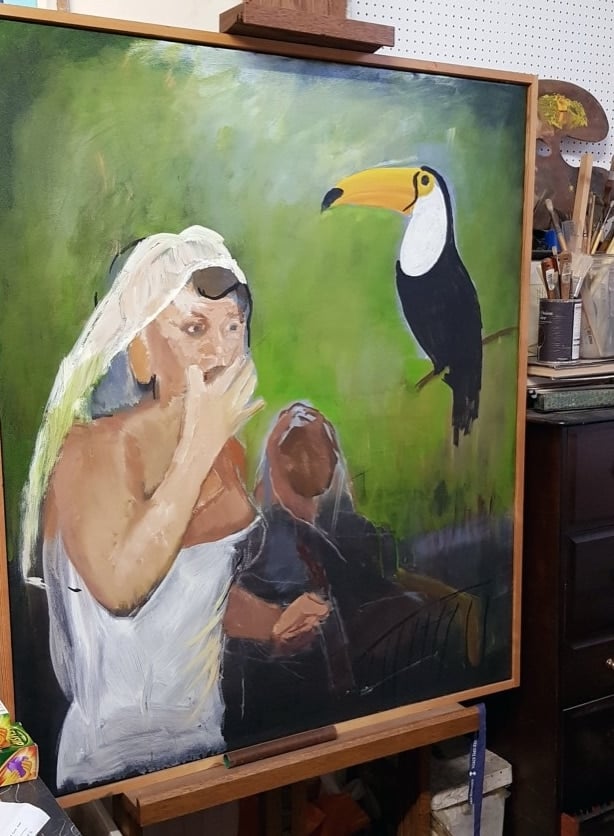
Barrington was only in his early twenties when his parents, who felt he would not earn a living as an artist, told him he had to stop painting and threatened to destroy his work. Burrowes stepped in and managed to convince the elder Barringtons that their son was too talented to abandon his practice.
Patrick’s first WPAC exhibition took place in 1953. By now he was well read in art history, spending much of his time at the library. Influenced by Constable, he produced a series of paintings from his observational studies in the Botanic Gardens. A friend of Barrington’s also recalls that Rubens was his favourite painter of portraits. Guided by his books, he even went as far as concocting ‘Rubens Jelly,’ an oil painting medium, from materials he bought in pharmacies.
Barrington’s work was a hit at the exhibition. Anthony Tasker, the PR Director for the Booker sugar companies, particularly admired the paintings and arranged for his company to offer Patrick a fellowship to study painting at Byam Shaw School of Art (now Central Saint Martins) in London.
Not long after he’d executed his accomplished self-portrait, and eight years before Guyana declared its independence from British colonial rule in 1966, Barrington sailed for England – but once there seldom went to class. “It was just an excuse to come to London,” he said. “They couldn’t teach me anything.” He tutored other students instead.
Unable to make a living through his painting, Patrick worked as an electrical engineer. He continued to paint in his spare time, and had his work exhibited in the Royal Academy summer exhibitions in the 70s. He took on a number of foreign commissions over the years but didn’t document the work, and sadly these have been lost to the record.
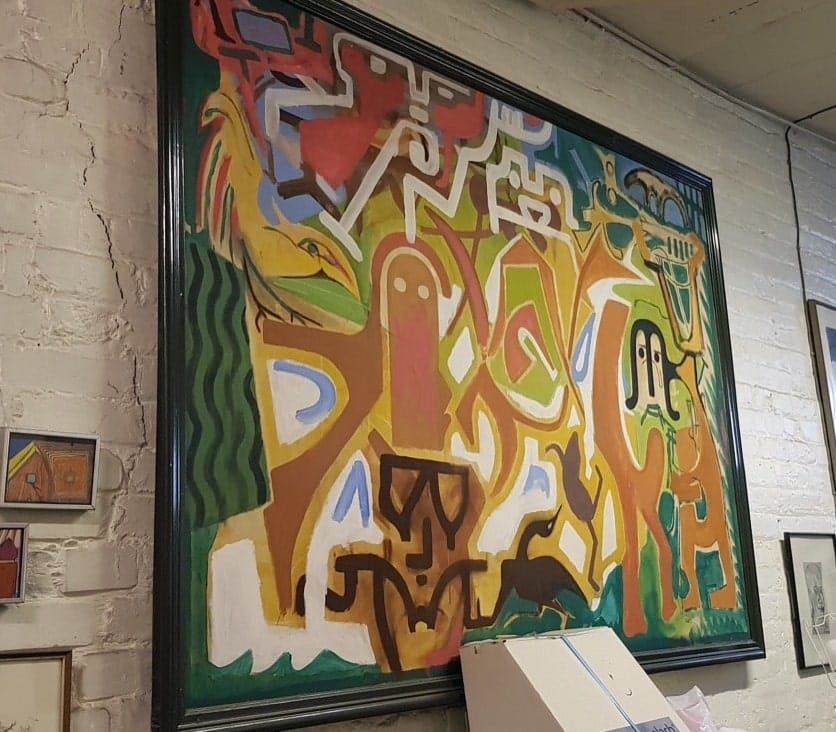
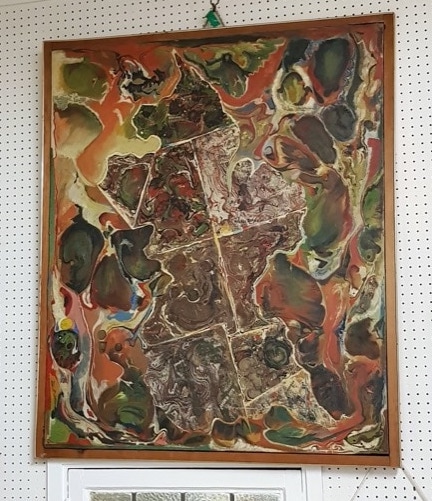
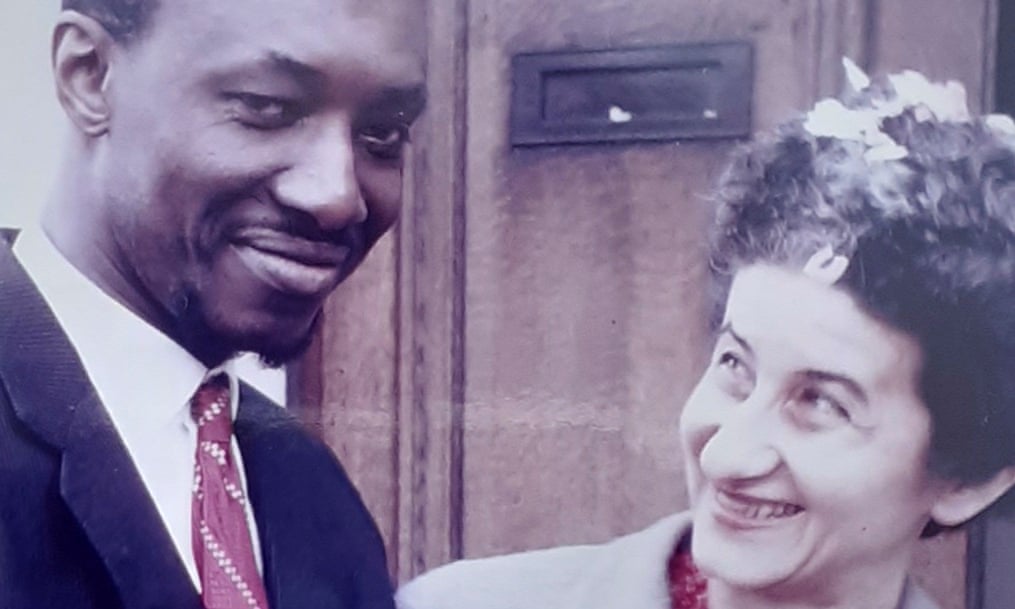
Known for his love of entertaining and dancing, it was on the dancefloor at the West Indian Students’ Centre in Earls Court that he courted Hanna Greenwood, formidable and remarkable in her own right, who would become his wife a few years later in 1967.
She was a Viennese, Jewish communist who had managed to flee the Nazis and make it to Paris, and later England, just before the Second World War. When she met Patrick she hadn’t long returned from Guyana herself, where she had gone on a trip for the Communist party and stayed with Cheddi and Janet Jagan, the future presidents of Guyana, who would become lifelong friends.
Nicknamed The Empress of Hapsburg, Hanna ran a wine bar called the Corkscrew in Battersea from 1978 until 1992, where cats slept on the bar and many raucous nights were had:
“Her parties, reminiscent of a 19th-century Paris salon, were legendary. Artists and academics, socialists and socialites of every hue and sexual orientation would gather with the “empress of Habsburg”, as she danced on the tables well into her 70s.” (Helen Smith Braunholtz)
A passionate supporter of gay rights, after the bar closed the couple took in lodgers through the LGBT telephone helpline Gay Switchboard. She died at home in 2019 at the grand age of 101.
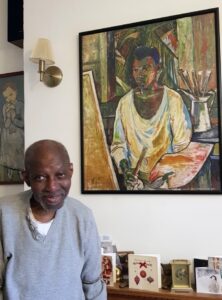
Patrick and Hanna’s Battersea bar and home drew a distinctly eclectic, artistic milieu, and Patrick is said to have regularly stayed up all night with guests, arguing and roaring with laughter. He is said by friends to have been interested in everything and everyone and had ‘the distinctive laughter of a happy person’.
Even in his final year he was still proudly showing off his self-portrait to new people he met, including Angela Loughran, who took the photos of his work published here (few other images of Barrington’s work can be found). He was one of Battersea’s great artists living in plain sight, and while British attention to his work’s mastery of colour has come too late, we hope that it will long continue, and more artworks will be uncovered and admired as he deserves.
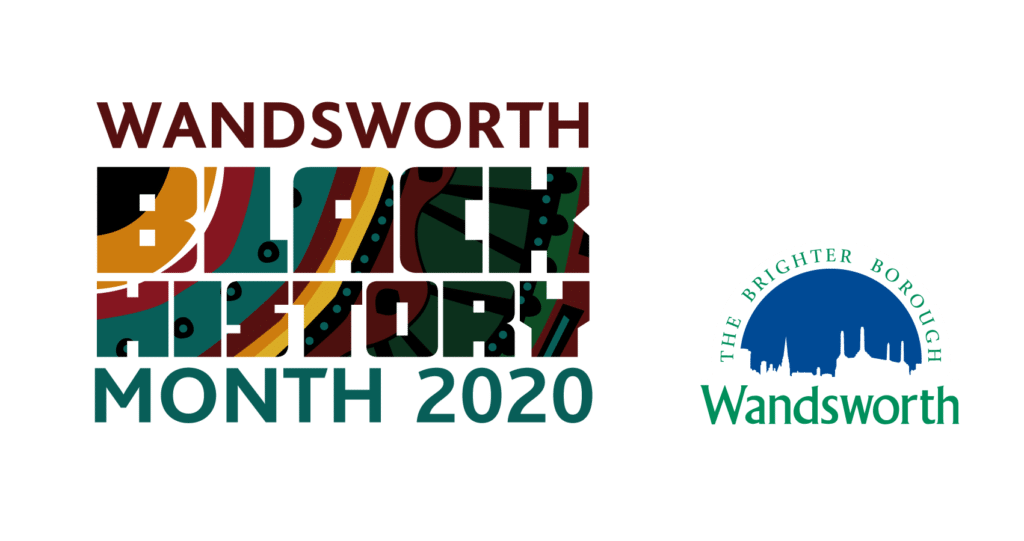
Sources:
https://www.theguardian.com/artanddesign/2020/jun/22/patrick-barrington-obituary
https://supamodu.com/2020/art/patrick-barrington-self-portrait-1957/
https://www.stabroeknews.com/2020/08/02/sunday/a-tale-of-three-artists/
https://www.theguardian.com/society/2019/jun/26/hanna-barrington-obituary
https://www.stabroeknews.com/2020/07/26/sunday/an-axe-to-the-root/

